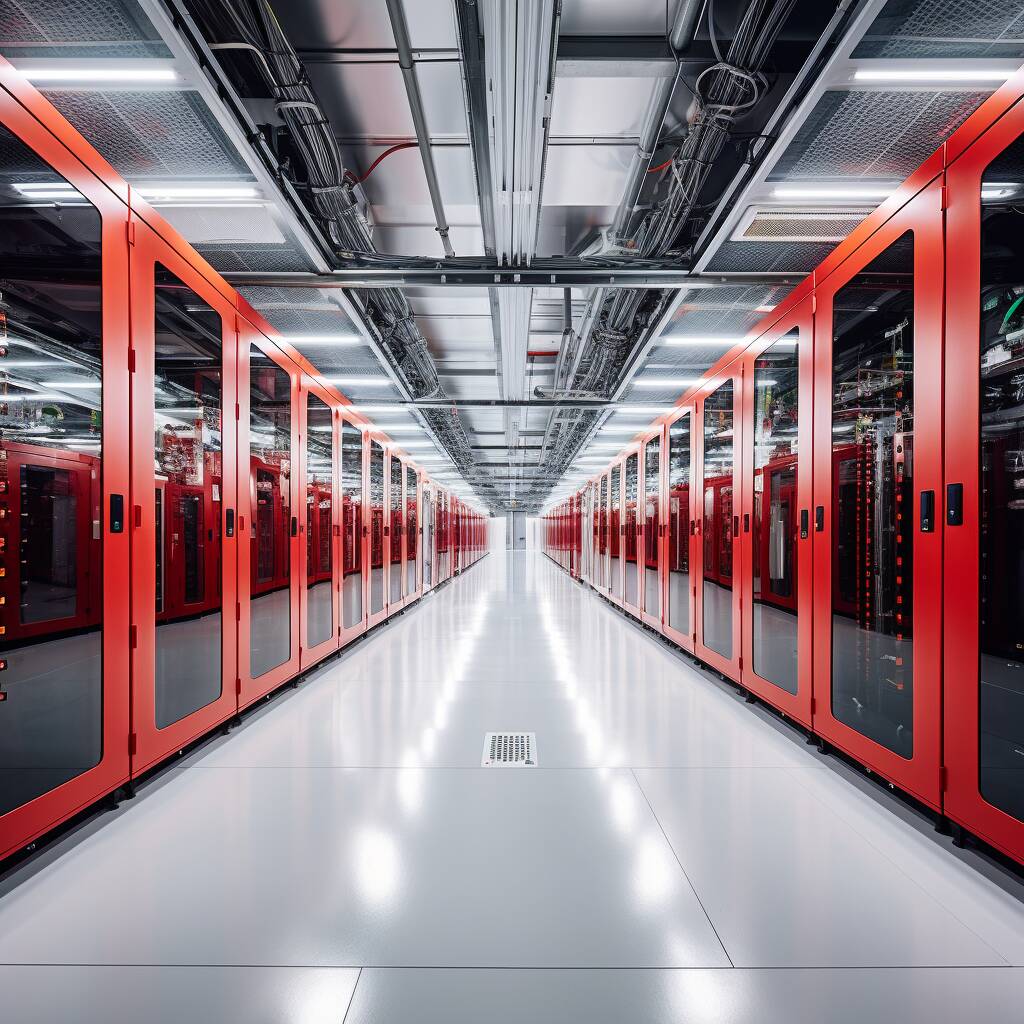The main topic of the article is the strain on cloud providers due to the increased demand for AI chips. The key points are:
1. Amazon Web Services, Microsoft, Google, and Oracle are limiting the availability of server chips for AI-powered software due to high demand.
2. Startups like CoreWeave, a GPU-focused cloud compute provider, are also feeling the pressure and have secured $2.3 billion in debt financing.
3. CoreWeave plans to use the funds to purchase hardware, meet client contracts, and expand its data center capacity.
4. CoreWeave initially focused on cryptocurrency applications but has pivoted to general-purpose computing and generative AI technologies.
5. CoreWeave provides access to Nvidia GPUs in the cloud for AI, machine learning, visual effects, and rendering.
6. The cloud infrastructure market has seen consolidation, but smaller players like CoreWeave can still succeed.
7. The demand for generative AI has led to significant investment in specialized GPU cloud infrastructure.
8. CoreWeave offers an accelerator program and plans to continue hiring throughout the year.
Main topic: The challenge of data storage efficiency for economic and environmental sustainability in the age of artificial intelligence.
Key points:
1. The growth of generative artificial intelligence is leading to increased data creation and replication, which poses challenges for sustainability goals.
2. Companies are addressing this challenge through decentralized data storage and software-defined cloud architectures.
3. Optimizing hardware efficiency and repurposing unused office buildings as data centers are also potential solutions to reduce carbon footprint and improve data security.
Companies are addressing the challenge of making big data more sustainable by optimizing data storage efficiency through decentralized and software-defined architectures, repurposing unused office buildings as data centers, and focusing on hardware efficiency and circularity.
The rising demand for AI technology and data centers is creating a supply issue due to the massive amounts of electricity and water required to operate and cool these facilities.
Intel is applying AI to its upcoming Meteor Lake chip to improve power management, using an algorithm that predicts and understands user behavior to optimize performance and energy efficiency.
The transformation of data servers to be AI-ready is consuming significant energy and natural resources, raising the question of whether AI can revolutionize technology's carbon footprint responsibly.
Intel CEO Pat Gelsinger believes that AI will extend beyond data centers and wants to put AI into everything, including PC CPUs, to bring AI processing closer to end users and enable real-time applications without relying on the cloud. Intel is positioning itself to tap into the growing demand for AI hardware and software across various sectors.
Artificial intelligence systems like ChatGPT are increasing the water consumption of data centers, prompting concerns about the environmental impact of AI's rapid growth. Microsoft and Google are taking steps to reduce the water and energy usage of AI systems, but experts emphasize the need for more efficient practices and transparency in resource usage.
The rapid adoption of artificial intelligence by cloud providers has led to a shortage of datacenter capacity, resulting in increased hosting prices and the need for infrastructure to accommodate high-power-density server clusters.
Artificial intelligence's rapid growth and adoption is leading to a significant increase in energy consumption, particularly in data centers, raising concerns about the environmental impact and the need for more efficient energy solutions.
Cloudflare is launching new products and apps to help customers build, deploy, and run AI models at the network edge, including Workers AI for running AI models on nearby GPUs, Vectorize for storing vector embeddings, and AI Gateway for managing costs and metrics. The aim is to provide a simpler and cost-effective AI management solution, addressing the challenges and costs associated with existing offerings in the market.
The surge in demand for advanced chips capable of handling AI workloads in data centers presents a multiyear opportunity for semiconductor companies like Advanced Micro Devices, Amazon, Axcelis Technologies, and Nvidia.
Researchers at the MIT Lincoln Laboratory Supercomputing Center (LLSC) are developing techniques to reduce energy consumption in data centers, including capping power usage and stopping AI training early, without compromising model performance, aiming to promote green computing and transparency in the industry.
A new study warns that the widespread adoption of artificial intelligence technology could lead to a substantial increase in electricity consumption, with AI systems relying on powerful servers and potentially driving a spike in energy demand.
The AI boom is driving a surge in data center spending, increasing energy consumption and putting pressure on local utilities, making rural areas attractive for data center construction.
India's Ministry of Electronics and Information Technology (MeitY) has published an AI vision document proposing the development of a national computing infrastructure with 80 exaFLOPS of power across three layers and a distributed data grid. The infrastructure will include high-end compute, an inference arm, and edge compute, and aims to enhance AI capabilities in the country. However, the planned investment falls short of China's recent announcement of 150 exaFLOPS of additional power and 1,800 exabytes of national storage capacity.
The total capacity of hyperscale data centers is expected to nearly triple over the next six years due to increased demand for generative AI, resulting in a significant increase in power requirements for these facilities.
